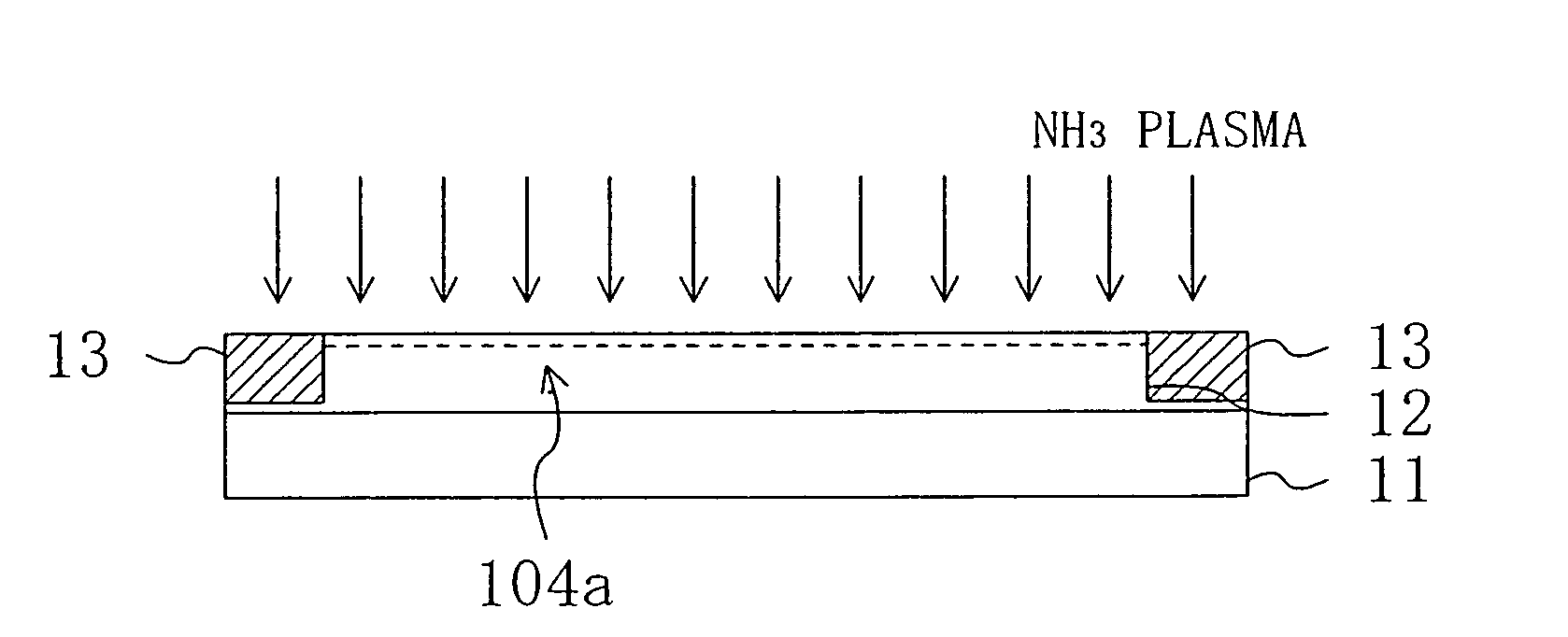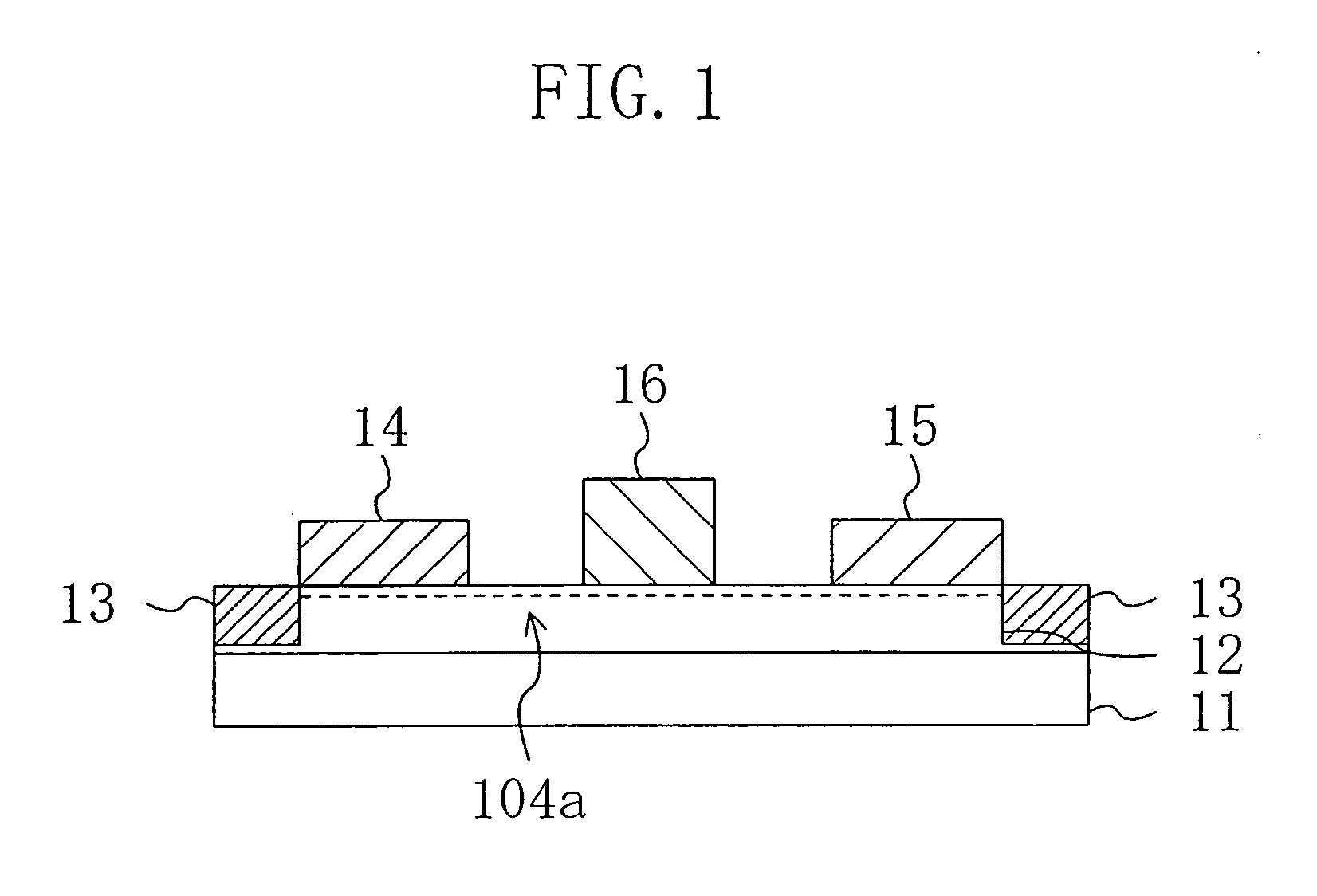Semiconductor device and method for fabricating the same
a technology of semiconductor devices and electrodes, applied in the direction of semiconductor devices, basic electric elements, electrical equipment, etc., can solve the problems of insufficient reduction of the value of the source-to-gate resistance value, difficulty in forming a gate electrode on the bottom surface of the recess, and difficulty in wet etching, so as to reduce the surface potential of electrons, reduce the source resistance, and improve the drain current value
- Summary
- Abstract
- Description
- Claims
- Application Information
AI Technical Summary
Benefits of technology
Problems solved by technology
Method used
Image
Examples
embodiment 1
[0043] A first embodiment of the present invention will be described with reference to the drawings.
[0044]FIG. 1 shows a cross-sectional structure of a MESFET (Metal Semiconductor FET) as a semiconductor device according to the first embodiment. As shown in FIG. 1, an epitaxial layer 12 composed of a GaN-based semiconductor is formed on a substrate 11 composed of, e.g., sapphire. An isolation region 13 for defining the active region of the transistor is formed in the epitaxial layer 12.
[0045] The isolation region may be formed by implanting nitrogen (N) ions or carbon (C) ions or by selectively oxidizing the epitaxial layer 12.
[0046] A source electrode 14 and a drain electrode 15 are formed as ohmic electrodes on the both end portions of the epitaxial layer 12 on the active region. A gate electrode 16 composed of metal is formed on the center portion of the active region in spaced apart relation to the source electrode 14 and the drain electrode 15.
[0047] The first embodiment is...
embodiment 2
[0063] A second embodiment of the present invention will be described with reference to the drawings.
[0064]FIG. 6 shows a cross-sectional structure of a MESFET as a semiconductor device according to the second embodiment. The description of the components which are shown in FIG. 6 and also shown in FIG. 1 will be omitted by retaining the same reference numerals.
[0065] The second embodiment is characterized in that a modified layer 104a obtained by exposing the surface of the epitaxial layer 12 to an ammonia plasma is formed selectively in the surface region of an epitaxial layer 12 located between a source electrode 14 and a gate electrode 16. A material composing the substrate 11 is not limited to sapphire. Silicon carbide (SiC) may also be used instead.
[0066] A description will be given herein below to a method for fabricating the MESFET thus constructed with reference to the drawings.
[0067]FIGS. 7A to 7C show respective cross-sectional structures of the MESFET according to th...
embodiment 3
[0074] A third embodiment of the present invention will be described with reference to the drawings.
[0075]FIG. 8 shows a cross-sectional structure of a MESFET as a semiconductor device according to the third embodiment. The description of the components which are shown in FIG. 8 and also shown in FIG. 6 will be omitted by retaining the same reference numerals.
[0076] The third embodiment is characterized in that a modified layer 104a obtained by exposing the surface of an epitaxial layer 12 to an ammonia plasma is formed in each of the respective surface regions of the epitaxial layer 12 located between a source electrode 14 and a gate electrode 16 and between the gate electrode 16 and a drain electrode 15. A material composing the substrate 11 is not limited to sapphire. Silicon carbide (SiC) may also be used instead.
[0077] The structure reduces a threshold voltage in each of the regions located between the source and gate and the gate and drain by a value as large as about 10 V,...
PUM
 Login to View More
Login to View More Abstract
Description
Claims
Application Information
 Login to View More
Login to View More - R&D
- Intellectual Property
- Life Sciences
- Materials
- Tech Scout
- Unparalleled Data Quality
- Higher Quality Content
- 60% Fewer Hallucinations
Browse by: Latest US Patents, China's latest patents, Technical Efficacy Thesaurus, Application Domain, Technology Topic, Popular Technical Reports.
© 2025 PatSnap. All rights reserved.Legal|Privacy policy|Modern Slavery Act Transparency Statement|Sitemap|About US| Contact US: help@patsnap.com



